From the West Hartford Archives: North Main Street Near Whitman Avenue Looking North

Audio By Carbonatix
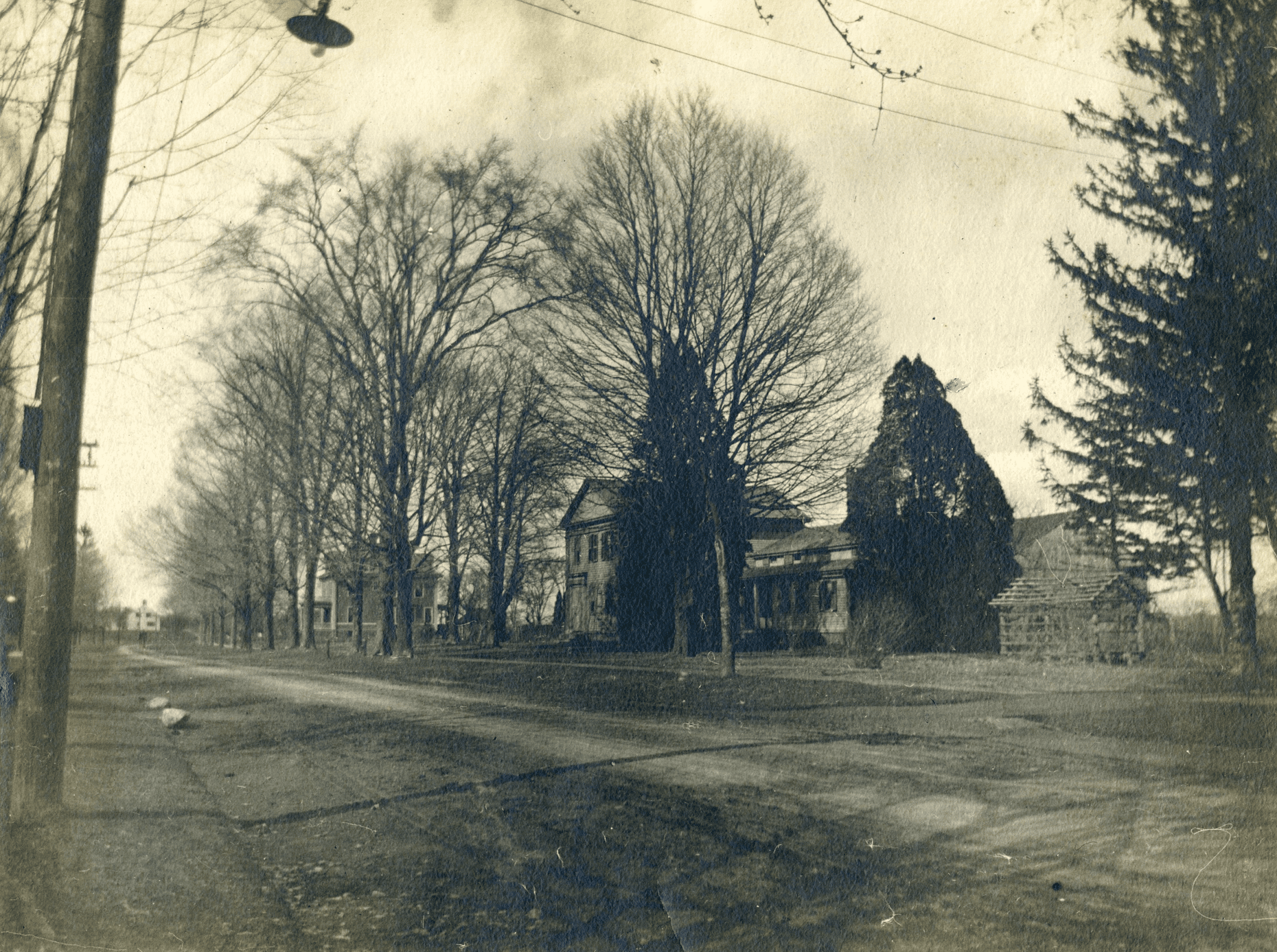
North Main near Whitman. Photo credit: Noah Webster House & West Hartford Historical Society
Historian Jeff Murray takes a look into West Hartford’s past to uncover some surprising information, stir up some memories, or reflect on how much life has changed – or hasn’t changed at all. Enjoy this week’s ‘From West Hartford’s Archives’ …
By Jeff Murray
This is a view of North Main Street looking north from between Whitman Avenue and Brace Road, between 1902 and 1907.
This section of Main Street can be traced back to when West Hartford was first settled and divided into long lots from Mountain Road to Quaker Lane in the 1670s. John Pantry owned this land in the late 1600s and through his descendants’ marriages to the Whitmans and Goodmans, the land was divided between them.
The eastern portion of the Pantry land was inherited by the Whitmans, while the western portion was inherited by the Goodmans, with the dividing line being Main Street. In 1723, Main Street was laid out from north to south to align with the homes of the early settlers, who had built along the center of their long lots. Some of the curves in the road today are a reminder of where it had to be diverted along the ridge while crossing through each proprietor’s land.
The house in the right-center of this photo was built in 1839 by Samuel Whitman (1786-1852), the grandson of the Whitman who had married into the Pantry family and had inherited the land. It was actually the second Whitman house, preceded by a much older colonial house from the 1750s, located to the north. Samuel Whitman married Elizabeth Howard in 1813 and the couple had at least eight children, who grew up in the colonial house and moved to the new house. They were of age when West Hartford split off from Hartford in 1854. Samuel’s son, also named Samuel (1823-1908), was elected as the first Treasurer of the town when it became independent. He resumed the position from 1879 to 1890 when he retired and the role was filled by his son, Henry C. Whitman (1864-1951). In 1894, Henry was also elected to the position of Town Clerk and served until his resignation in January 1929. The Whitman family was therefore extremely involved in civil affairs in the town.
Just a few years after, William H. Hall, superintendent of schools, wrote an excellent book on the history of the town. Henry Whitman gifted this book to his daughter, Ruth Whitman Smith, in September 1931.
In the 1950s and early 1960s, Ruth added her own annotations to certain things in the book, making corrections or expanding on the information. For example, near a photo of the Thomas Brace house, which stood on the corner of North Main Street and Brace Road for more than 150 years, she wrote: “Now moved back on Brace Rd when that St. was put through 1920’s. In 1962, was torn down for parking lot.” Near a photo of the Sedgwick house on the northwest corner of South Main Street and Sedgwick Road, she wrote: “Taken down + rebuilt elsewhere outside of town – 1954”. She also included some clippings from newspaper articles from the 1890s and 1900s highlighting certain events in town. How do I know all of this? About five years ago, I bought the book online, expecting just a standard copy, and was astonished when I opened it and saw the handwriting on the first page that said: “Ruth Whitman Smith, from her father Henry Clark Whitman, Sept. 1931.”
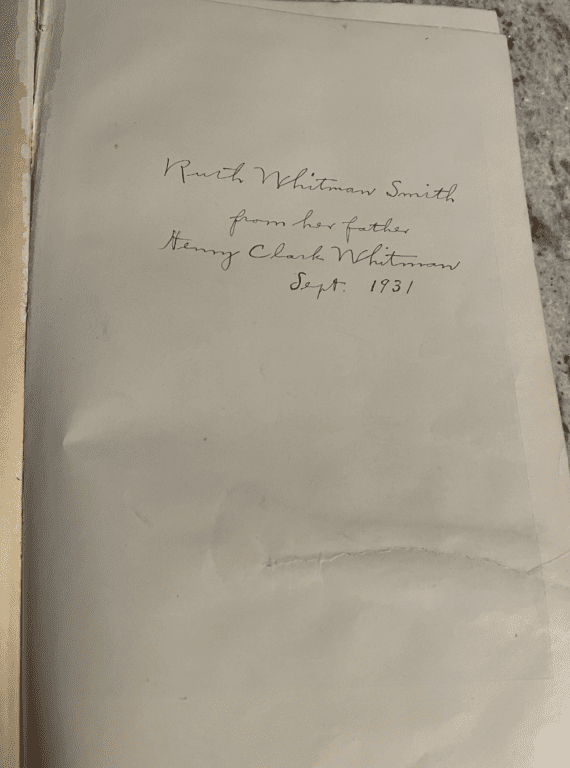
Photo by Jeff Murray of inscription in his copy of William Hall’s book, “West Hartford.”
It was surreal knowing this Whitman family relic had made its way into my hands. Her great-grandfather had built the house in this photo.
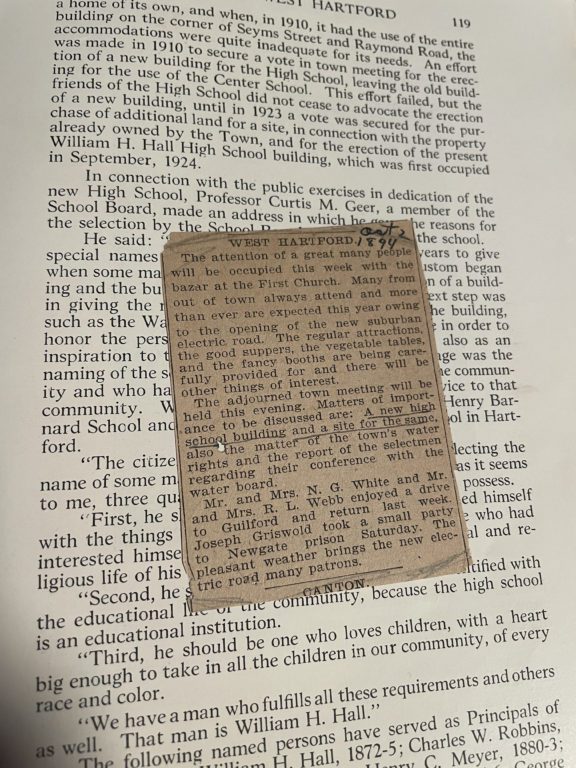
Photo by Jeff Murray of page in William Hall’s book, “West Hartford.”
By the 1890s, this land on North Main Street was divided between Samuel Whitman’s children: Samuel Whitman, Jr., who owned the southern section, and his sister, Charlotte Whitman Flagg (1821-1901), who owned the northern section. Charlotte grew up in the old colonial house and married Levi Flagg in 1845, moving to Yonkers, NY, where she lived for the rest of her life. A map in 1896 shows the east side of North Main Street, with Charlotte’s holdings in the north across from the (very newly laid out) Whitman Avenue, and her brother Samuel’s property on the south side.
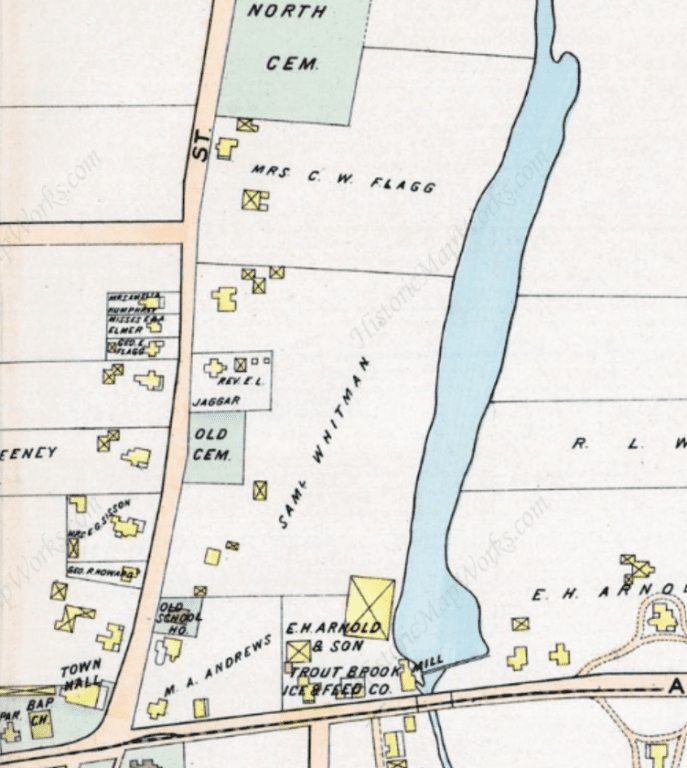
Photo credit: 1896 Atlas
It was Charlotte’s land that was the first to be sold out of the family. In early 1900, she sold the land and the old colonial Whitman house to Frank A. Thompson, an executive with the Phoenix Mutual Life Insurance Company. A little more than a year later, Charlotte died in New York. Thompson witnessed the numbering of houses along North Main Street starting from the Center and the extension of water mains, sidewalks, and sewers. Soon after he moved into the old house, he built a new one in the summer of 1900, tearing down the old one in 1902. This new house is the one that is seen in the left-center of the headline photograph. In 1906, he sold the house to George A. Kellogg, who was the U.S. referee in bankruptcy. His wife Louise Williams, was regent of the Sarah Whitman Hooker chapter of the Daughters of the American Revolution during World War I. She was also active in the West Hartford Chamber of Commerce in the 1920s. Louise and George lived there until their deaths in 1950 and 1953, respectively. The house and land passed to their son Martin, a portrait painter. His studio was in a barn in the rear of the property through 1970. Soon after, the land was sold off, the house was torn down, and the current condos at 58/62 North Main Street were built at the corner of Loomis Drive.
The southern portion remained in the family for longer. In 1908, Charlotte’s brother Samuel died, leaving his wife and children in possession of the 1839 house on the southern chunk of the old Whitman land. Slices of the estate were carved out for his elder son Henry C. Whitman and elder daughter Mary L. Whitman at the present site of the southern branch of Loomis Drive. The children from his second marriage were Kate E. Whitman, secretary to the town clerk, and Helen H. Whitman, who was principal of the Center School. Helen’s sudden death in 1944 cemented her legacy in the West Hartford school system and a month later, the Board of Education renamed the Center School in honor of her. The Whitman School stood on the west side of Raymond Road near Memorial Road and was converted to a police station in the late 1970s after it closed; the building still stands today. Kate E. Whitman, the last surviving child of Samuel Whitman, died in 1962 at the Whitman house. With no direct descendants, it became a familiar story: the land was sold, the house was then torn down, and condos were built at 40 North Main Street.
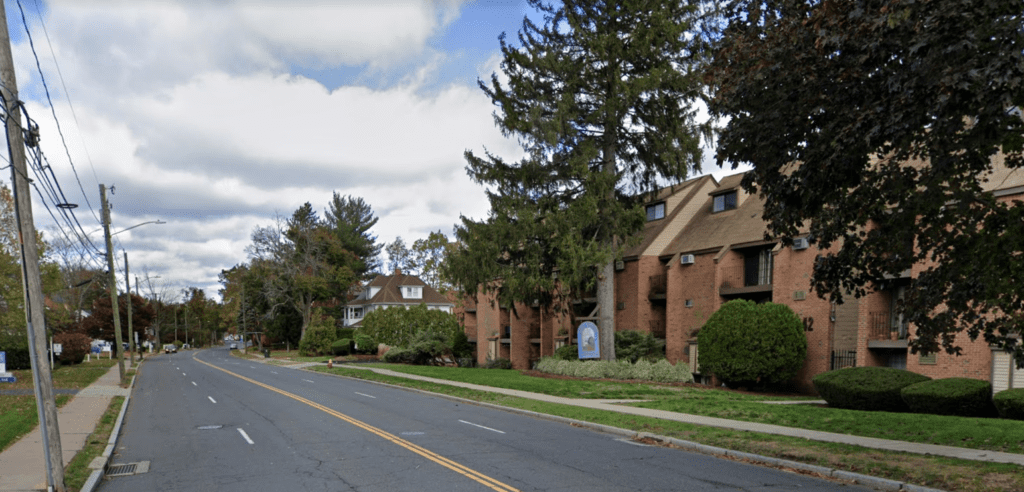
Recent view of North Main Street near Whitman looking north. Google Street View
The land on the east side of North Main Street past the Center had been owned by the Whitman family from the early 1700s and steadily divided into smaller and smaller slices among the descendants until the 1960s, only a decade before the current housing was built. This photo from the early 1900s shows the street and landscape right when the area began to transition from solid Whitman territory to the last vestiges of the family’s holdings.
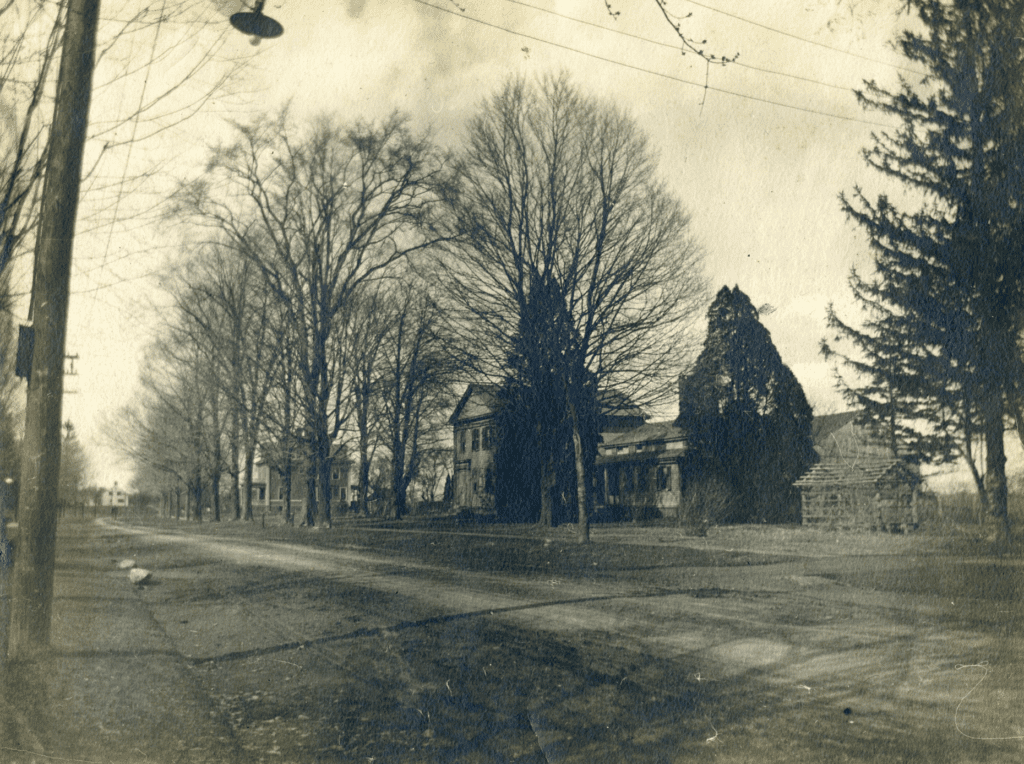
North Main near Whitman. Photo credit: Noah Webster House & West Hartford Historical Society
Jeff Murray was born and raised in West Hartford and has been involved with the Noah Webster House & West Hartford Historical Society since 2011 when he was a high school student and won the Meyer Prize for his essay on local history. Jeff routinely volunteers as local history researcher uncovering information for numerous museum programs such as the West Hartford House Tour and West Hartford Hauntings. Jeff works as a data analyst at Pratt & Whitney.
Like what you see here? Click here to subscribe to We-Ha’s newsletter so you’ll always be in the know about what’s happening in West Hartford! Click the blue button below to become a supporter of We-Ha.com and our efforts to continue producing quality journalism.



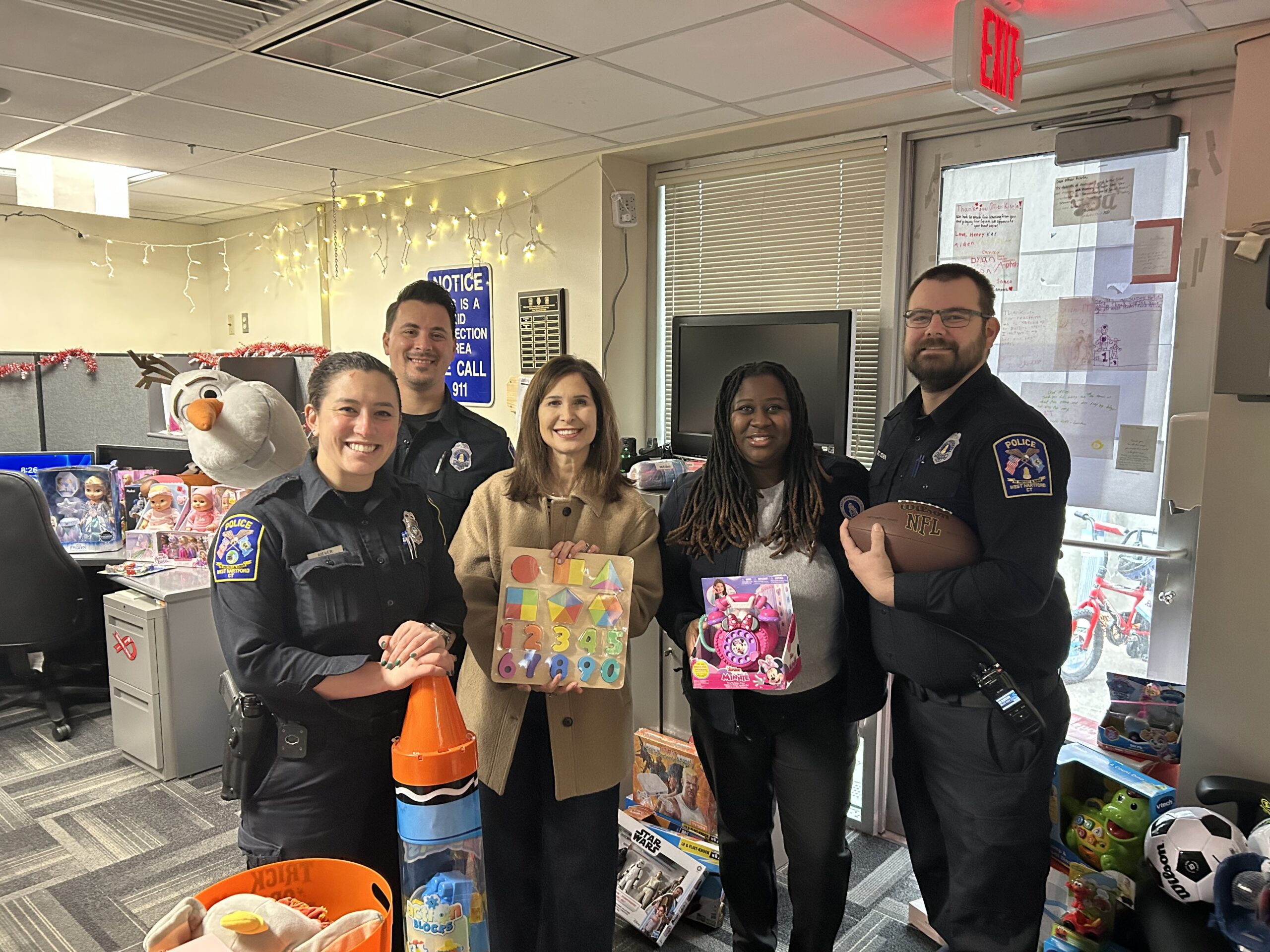
What a treasure you found!